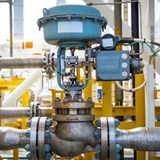Pressure-control valves are found in practically every pneumatic and hydraulic system. They help in a variety of functions, from keeping system pressures below a desired limit to maintaining a set pressure level in part of a circuit. Different types of pressure control valves include relief, reducing, sequence, counterbalance, safety, and unloading.
Pressure Relief Valves – most pneumatic and hydraulic power systems are designed to operate within a defined pressure range. This range is a function of the forces the actuators in the system must generate to do the required work. Without controlling these forces, the power components and expensive equipment could get damaged. Relief valves make it possible to avoid this hazard.
Sequencing Valves – In circuits that have more than one actuator, it’s probably necessary to move the actuators in a defined order or sequence. Sequencing valves are normally closed two-way valves, and they regulate the sequence that various functions in a circuit will occur. They resemble direct-acting relief valves, except that their spring chambers are generally drained externally, instead of internally, to the outlet port like a relief valve.
Pressure-Reducing Valves – Pressure-reducing valves are usually open two-way valves that close when subjected to sufficient downstream pressure. Direct-acting valves are pressure-reducing valves that limit the maximum pressure available in the secondary circuit regardless of pressure changes in the main circuit. The spool in a pilot-operated, pressure-reducing valve is balanced hydraulically by downstream pressure at both ends. The pilot valve relieves enough gas to position the spool so that flow through the main valve equals the requirements of the reduced-pressure circuit.
Counterbalance Valves – These valves are typically closed and are often used to maintain a set pressure in a portion of a circuit, usually to counterbalance a weight. The style of valve is ideal for counterbalancing an external force or to counteract a weight like in a press to keep it from free-falling. The valve’s primary port is connected to the rod end of a cylinder, and the secondary port is connected to the directional control valve. The pressure is set slightly higher than what’s required to keep the load from free-falling.
To learn more click here.
Courtesy of Kelly Pneumatics.


